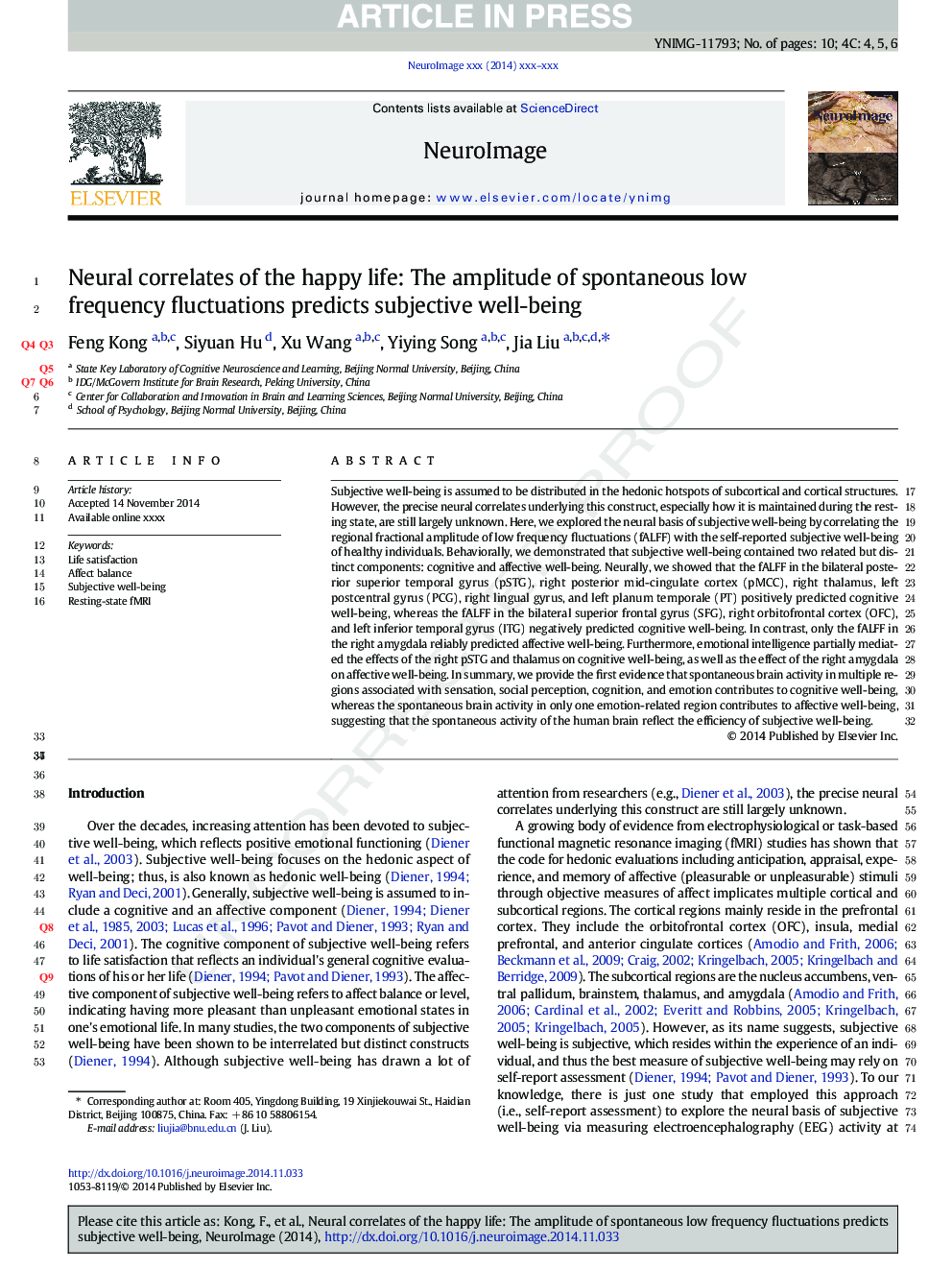| کد مقاله | کد نشریه | سال انتشار | مقاله انگلیسی | نسخه تمام متن |
|---|---|---|---|---|
| 6026160 | 1580900 | 2015 | 10 صفحه PDF | دانلود رایگان |
عنوان انگلیسی مقاله ISI
Neural correlates of the happy life: The amplitude of spontaneous low frequency fluctuations predicts subjective well-being
ترجمه فارسی عنوان
همبستگی عضوی زندگی شاد: دامنه نوسانات فرکانس خود به خودی پیش بینی رفاه ذهنی
دانلود مقاله + سفارش ترجمه
دانلود مقاله ISI انگلیسی
رایگان برای ایرانیان
کلمات کلیدی
موضوعات مرتبط
علوم زیستی و بیوفناوری
علم عصب شناسی
علوم اعصاب شناختی
چکیده انگلیسی
Subjective well-being is assumed to be distributed in the hedonic hotspots of subcortical and cortical structures. However, the precise neural correlates underlying this construct, especially how it is maintained during the resting state, are still largely unknown. Here, we explored the neural basis of subjective well-being by correlating the regional fractional amplitude of low frequency fluctuations (fALFF) with the self-reported subjective well-being of healthy individuals. Behaviorally, we demonstrated that subjective well-being contained two related but distinct components: cognitive and affective well-being. Neurally, we showed that the fALFF in the bilateral posterior superior temporal gyrus (pSTG), right posterior mid-cingulate cortex (pMCC), right thalamus, left postcentral gyrus (PCG), right lingual gyrus, and left planum temporale (PT) positively predicted cognitive well-being, whereas the fALFF in the bilateral superior frontal gyrus (SFG), right orbitofrontal cortex (OFC), and left inferior temporal gyrus (ITG) negatively predicted cognitive well-being. In contrast, only the fALFF in the right amygdala reliably predicted affective well-being. Furthermore, emotional intelligence partially mediated the effects of the right pSTG and thalamus on cognitive well-being, as well as the effect of the right amygdala on affective well-being. In summary, we provide the first evidence that spontaneous brain activity in multiple regions associated with sensation, social perception, cognition, and emotion contributes to cognitive well-being, whereas the spontaneous brain activity in only one emotion-related region contributes to affective well-being, suggesting that the spontaneous activity of the human brain reflect the efficiency of subjective well-being.
ناشر
Database: Elsevier - ScienceDirect (ساینس دایرکت)
Journal: NeuroImage - Volume 107, 15 February 2015, Pages 136-145
Journal: NeuroImage - Volume 107, 15 February 2015, Pages 136-145
نویسندگان
Feng Kong, Siyuan Hu, Xu Wang, Yiying Song, Jia Liu,
